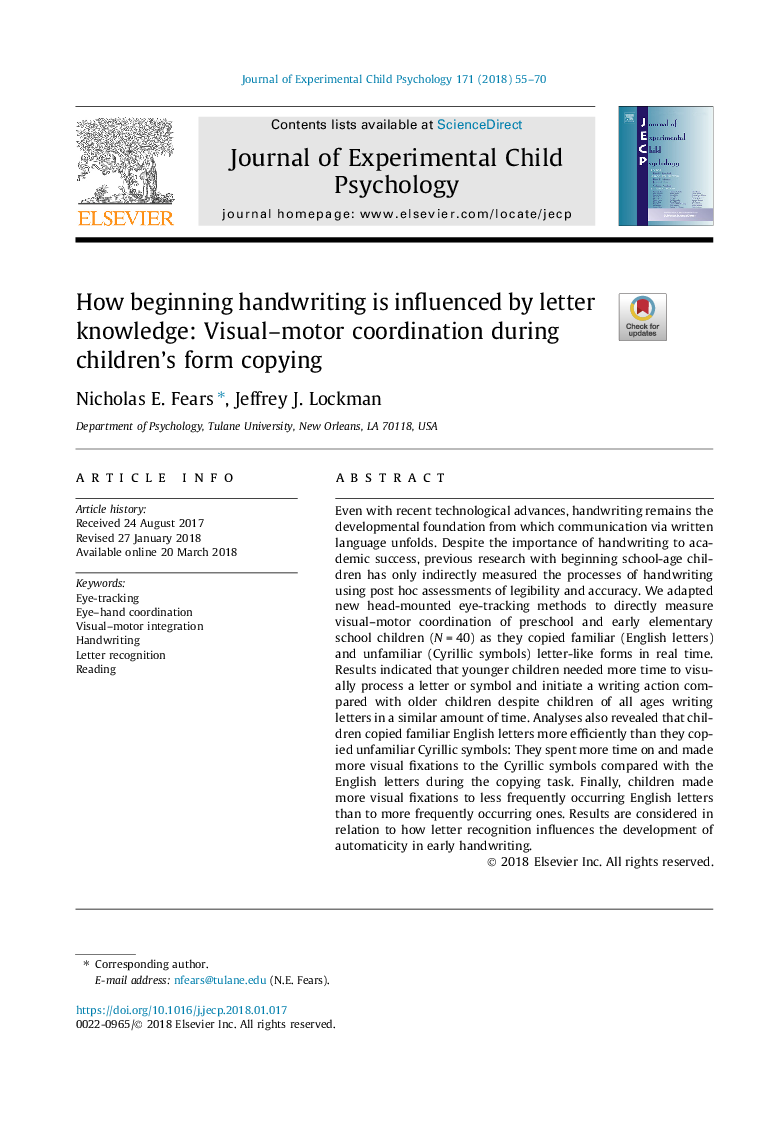| Article ID | Journal | Published Year | Pages | File Type |
|---|---|---|---|---|
| 7273961 | Journal of Experimental Child Psychology | 2018 | 16 Pages |
Abstract
Even with recent technological advances, handwriting remains the developmental foundation from which communication via written language unfolds. Despite the importance of handwriting to academic success, previous research with beginning school-age children has only indirectly measured the processes of handwriting using post hoc assessments of legibility and accuracy. We adapted new head-mounted eye-tracking methods to directly measure visual-motor coordination of preschool and early elementary school children (Nâ¯=â¯40) as they copied familiar (English letters) and unfamiliar (Cyrillic symbols) letter-like forms in real time. Results indicated that younger children needed more time to visually process a letter or symbol and initiate a writing action compared with older children despite children of all ages writing letters in a similar amount of time. Analyses also revealed that children copied familiar English letters more efficiently than they copied unfamiliar Cyrillic symbols: They spent more time on and made more visual fixations to the Cyrillic symbols compared with the English letters during the copying task. Finally, children made more visual fixations to less frequently occurring English letters than to more frequently occurring ones. Results are considered in relation to how letter recognition influences the development of automaticity in early handwriting.
Related Topics
Social Sciences and Humanities
Psychology
Developmental and Educational Psychology
Authors
Nicholas E. Fears, Jeffrey J. Lockman,
